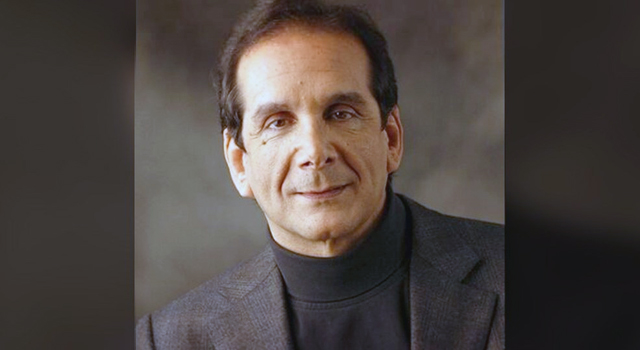Connecticut Jewish schools get the urge to merge
By Cindy Mindell
There’s a Talmudic concept that Rabbi Elisha Paul evokes when speaking about the Bi-Cultural Hebrew Academy of Connecticut, which welcomed students for the first time last week. The newly-formed pre-K-through-grade 12 school is the outgrowth of the recent merger between Stamford’s Bi-Cultural Day School and the Jewish High School of Connecticut. It is the first such comprehensive Jewish school in the state.
“‘B’rov am hadras melech’– basically the Jewish equivalent of ‘the more, the merrier,’” says Paul, who served as principal of the Jewish High School of CT and now serves as “madriach ruchani” – spiritual leader – of the new school.
“For example, are you supposed to have two different minyanim as opposed to one? Ideally, you should have everyone attend a bigger minyan because B’rov am hadras melech – with more members of the nation, more citizens, more participants, it’s a greater honor to God.”
Paul may be talking about the new Stamford Jewish school, but the Talmudic statement is also befitting a similar development in Greater Hartford, where a merger between the Bess & Paul Sigel Hebrew Academy and the Hebrew High School of New England (HHNE) is in the planning stage and is expected to be completed next fall, in time for the start of the 2019 school year.
“It makes a lot of sense for some schools to explore mergers,” says Ann Pava of West Hartford, co-head of the Hartford project’s merger steering committee, together with Ted Zablotsky and David Glahn. “The first reason is, of course, to share resources, buildings, faculty, office personnel, and development and recruitment professionals. There are financial savings in these areas that can be used to better the educational product in interesting and innovative ways.”
Pava also cites a second reason, something more profound.
“Mergers provide schools the opportunity to become something new, to be part of a growing movement to change the face of Jewish day schools,” she says. “And that’s what we aim to do here. Our local merger is not just the merger of two institutions; it’s the creation of something new and exciting, while respecting the history and journeys of both schools.”
The Hartford-area merger is facilitated by Prizmah: Jewish Center for Jewish Day Schools, an umbrella organization that emerged in 2016 from the North American Jewish Day School Conference. Pava, who serves as acting chair of the Prizmah board of directors, says that several additional school merger projects have kicked off across the country since Prizmah first lent its consulting services to the Hartford effort last December.
In fact, there is only one precedent for the Connecticut day school teams to look to as an example – Georgia’s Atlanta Jewish Academy, a merger between Greenfield Hebrew Academy and Yeshiva Atlanta High School – a project that Rabbi Paul helped initiate before he took the position at the Jewish High School of Connecticut.
In the Stamford community, the vision of a comprehensive pre-K through grade 12 school goes back to Walter Shuchatowitz, who is a founder of Bi-Cultural Day School and served as its first and longtime head of school. Now 91, “Mr. S,” as he is affectionately known, serves on the school’s Board of Incorporators and has been part of the merger discussions.
“The combined mission of Bi-Cultural Hebrew Academy is to be able to offer an excellent general and Judaic education continuous from pre-K through 12th grade and for high school students to have a seamless local option,” says Jacqueline Herman, who was head of Bi-Cultural Day School and remains for the merged entity.
“Along with academic excellence, it’s also very important for the children to have the opportunity to take their knowledge and be leaders in the Jewish community, participate in and run chessed programs, and give back to this community, embrace this community, and really be a collaborative partner. We want Stamford to be a destination for families of all denominations to feel that Bi-Cultural is a school of choice,” she says.
To help with the process, the Hartford-area team hired educational consultant Dr. Joshua Levisohn as merger director.
“Mergers are not very frequent and there are few enough times that each merger has its own unique aspects – so there’s no template or model,” says educational consultant Dr. Joshua Levisohn, who came aboard the Hartford project as merger director in January. Even with 23 years of experience in the day school world and a doctorate in Judaic Studies from Harvard, this is the first merger project for Levisohn, who is considered among the country’s leading day school experts.
He will be working over the coming year with Dr. Richard Nabel, acting HHNE head of school, and Hebrew Academy head of school Rabbi Zev Silver, as he guides the 12 working committees dealing with the many facets of the project, like governance, staffing, and fundraising.
“When people hear ‘merger’, their first instinct is efficiencies and financial savings,” Levisohn says. “The truth of the matter is that there may be some efficiencies, but when you’re merging a pre-K through eighth with a high school, there are not major efficiencies – at least in the teaching, because you’re still going to have the same number of grades. But what you are able to do is have a much more coherent vision for the school: you allow the leadership to project a vision for the community and for kids from ages two through 18. You are able to create a more robust institution with abilities to communicate in more effective ways and to have the different divisions work together in more effective ways to strengthen the institution as a whole.
“When you strengthen the school and you strengthen the environment, you are able to recruit new students, and ultimately, it’s those new students who are going to create the real efficiencies. That’s not the entire goal of the merger but that’s where the efficiencies come from: the overall goals have as much to do with creating a really robust school with a coherent vision than it does with finances,” he says.
The Jewish school merger phenomenon may be relatively new, but it is becoming more common. Sigel Hebrew Academy co-president Yitz Moss saw the trend up close two years ago as a participant in the Wexner Heritage Program, a learning and leadership-development initiative for Jewish communal lay leaders.
“If you talk to day school leaders in any small market – outside New York City, Los Angeles, Chicago – everyone’s having the same problems across the United States,” he says. “Day school enrollment is dwindling, partly due to the cost of attendance. People are looking at different models to make Jewish day schools sustainable in these smaller communities. I think we’re going to see mergers all over the country.”
In Stamford, the Bi-Cultural Hebrew Academy will be housed on two campuses, with each of the merged schools remaining at its current location, at least for the time being.
In West Hartford, however, the building that houses the Sigel Hebrew Academy has reached its useful end, says merger steering committee co-chair Ted Zablotsky, who also serves as HHNE president.
“For a number of reasons, the board, administration, and staff feel compelled to sell the property and get out. It’s much larger than they need, it’s very inefficient, it requires all kinds of repairs, heating and cooling is a nightmare, and it’s a non-sustainable location for them.”
School leaders realized that the best solution would be to co-locate on the HHNE campus and build a wing to accommodate the younger grades.
“We’re looking to start from scratch,” Zablotsky says. “Instead of having just a combination of two existing schools, let’s make a school from pre-K to 12 that is new, superb and excellent. We will want to retain all of the classic benefits that people identify as what they love about both schools, and we’re going to make them better, stronger,” he adds.
That means preserving the respective identities of each school.
“Hebrew Academy is a local school, whereas the Hebrew High School is regional,” says Moss. “That makes our institution very West Hartford-y as opposed to New England-ish. We need to make sure that we keep the Springfield and New Haven communities involved in the school and help them understand that the high school is still a regional entity. Even though we’re making one school, we need to preserve that regional identity.”
For the Stamford schools, a merger was the next step in a synergistic relationship that has evolved over the last three years, when the Jewish High School relocated to the city from New Haven: Bi-Cultural graduates make up at least 60 percent of the high school’s student population, and the two boards have some members in common.
Two years ago, Bi-Cultural board president David Pitkoff met with fellow community leaders at the Jewish High School and mentioned exploring a formal joint effort, an idea that was already on the mind of Geoff Erickson, Pitkoff’s counterpart on the high school’s board.
“The logic and the momentum just built, because it always came down to doing what is the best thing for the community: to build a pre-K through 12 school, and that’s what really drove it,” Pitkoff says. “Thankfully, the leadership of both schools was very positive and understood that and wanted it.” The two schools will continue to operate in their respective locations over the next year, while options for relocation and building expansion are explored.
Both Pitkoff and Erickson hope that the school merger is just the first step in creating more opportunities for cooperation throughout the Stamford Jewish community.
“What we’ve been talking about is how do we build a stronger Jewish community based in Fairfield County?” Erickson says. “We believe that the pillar of that foundation is education. It’s not only what keeps kids here but it’s also what draws them back after they go to college and graduate.”
Zablotsky agrees. “You look around the country and the strongest Jewish communities are the ones that have a strong Orthodox day school and that’s what we’re looking to sustain,” he says.
Both merger teams see many opportunities for collaboration between the new schools and the greater community.
“This hopefully will lead us forward where all the organizations start working together in a more cohesive and complimentary manner, supporting each other, helping each other, and feeding off each other,” says Bi-Cultural’s Pitkoff. “For example, maybe the high school kids can mentor the younger day school kids or kids who aren’t in day school. We can create adult-education opportunities and a community learning center. We can really focus on chessed projects within our broader community, both in the Stamford area but also in redefining ‘community’ as extending all the way to Israel and start co-learning with kids from Israel.”
Since its founding in 1956, Bi-Cultural has worked to create these kinds of collaborative relationships within the Stamford Jewish community at large, says Jacqueline Herman, who has served as head of school for the last seven years.
“Our students are active participants in their shuls and at the JCC and in Jewish youth groups; students volunteer at Friendship Circle,” she says. “We really pride ourselves on building young Jewish leaders and we know historically that our students who go to high schools – Jewish, private, or public – often take on leadership positions there, whether with student government or chessed projects, leadership roles. We will look to expand that horizon now with the high school.”
If both mergers go as planned, the state will boast two even more robust centers of Jewish life, magnets for the young Jewish families who will strengthen the communities and bolster Jewish continuity.
That potential is what keeps Josh Levisohn coming back to West Hartford three days a week from his home in Rockville, Md. to nurture the merger process.
“I love the idea of pulling together two different schools and cultures and being able to make it work,” he says. “The educational components are what excite me the most, and just seeing the process through, hopefully to success. Knowing that it’s so crucial to a community, helping to shoulder that responsibility, feels exceedingly worthwhile and critical. That’s what gets me up in the morning.”
Though both the Stamford and West Hartford schools are guided by the precepts of Modern Orthodox Judaism, they stress the importance of all Jews, regardless of background or level of observance.
“We believe that everyone should sit at the Jewish communal table and that large-tent Judaism needs to make a comeback,” says Paul. “That’s klal yisrael, the Jewish community, and that’s what we really need to focus on. One-size-fits-all Judaism is a lost art and when it’s possible, there’s no reason that you shouldn’t maximize the communal institution’s footprint. We should be playing together in the same sandbox, rather than see the Jewish community as a bunch of individual sandboxes. We have to start looking at the Jewish community as one big beach that we all share.”
Bi-Cultural Hebrew Academy of Connecticut will host open house events at its two Stamford locations on Sunday, Nov. 4. For details: bcds.org / (203) 329-2186.
The Greater Hartford merger steering committee invites community members to participate in the process and will be holding a competition to name the new school. For details, contact merger director Dr. Joshua Levisohn: josh@educannonconsulting.com.
CAP: Bi-Cultural Hebrew Academy of Connecticut







 Southern New England Jewish Ledger
Southern New England Jewish Ledger















